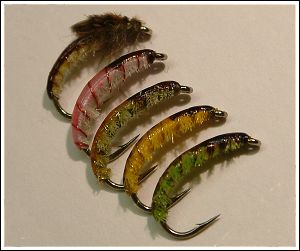
Tying the Mcphail Bug
By Davie McPhail
This method was developed by myself as I
have tyed many caddis in my tying career from woven nymphs to many long and time consuming
patterns to only to lose one after another fishing for grayling and trout which where
lying in the rockiest area and because they took so long to tye I spent more time trying
to retrieve my fly than actual fishing them, so I have tyed many caddis and Mayfly
patterns which can be tyed very quickly and also making sure that they keep catching fish
I came up with this simple tying method as I hope you can see.
Tying description:
Hook: First choice
Partridge SHR barbless shrimp then Scorpion 31165 super heavy weight sizes 8s to 14s.
Under-body: Lead wire or
the one I prefer is the lead foil which has got a sticky back and form a flat body which
makes it easier to form a perfect body.
Rib: the rib should be
tyed with wire to suit the pattern and colour of the fly that you are tying and it makes
sense as you are going to be cutting your body to form the legs or gills as using any
other material you may cut through it when using the scalpel blade.
Body: DATAM Glo-Brite
Multi-Yarn white antron. Wind the antron up the body forming the shape of your fly as you
go, making sure you over lap meaning when you do a turn the next should slightly over the
last by doing this when you start cutting there is less chance of you going through to the
lead. This method can be used in many patterns like caddis from the larva stage to the
adult and also Mayfly patterns it is up to you. Once you have formed the body rib all the
way to the eye of the hook then tye off.
| The next stage is to colour
the fly with a Pantone pen, which are permanent. Once you have coloured your fly use
Loctite super glue the one that comes with a brush (see photo) as it is a lot easier to
apply the glue with a brush. Apply the super glue along the back of the fly it is
important you don't let the glue run around the body as when you go to cut the
under side you will not get the best result. After the super glue dries then you may cut directly under the body using
the scalpel blade cutting all the way until i reach the eye of the hook which will cause
the antron to spring out to form the legs, using a piece of velcro pull out the anton
fibres to form the legs finally varnish the back of the fly to finish. |
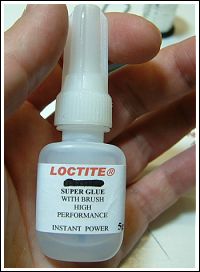 |
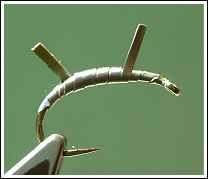
Three layers of lead wire
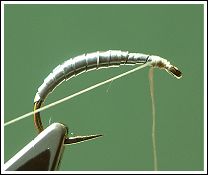
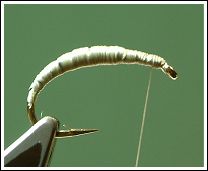
Covering the lead wire with thread
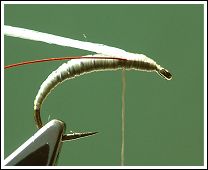
Tying on the antron yarn and rib wire.
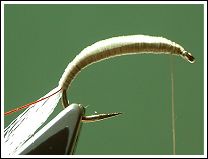
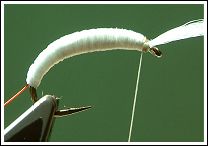
Wind the antron up the body forming the
shape of your fly
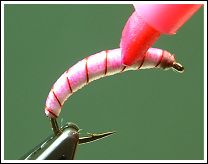
Rib the body from the back to forward.
Colour the fly with a Pantone pen
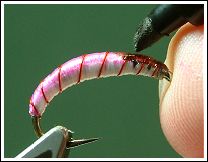
Colour the fly with a Pantone pen
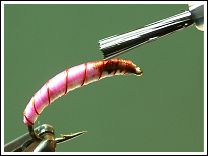
Apply the super glue along the back
of the fly it is important you don't let the
glue run around the body
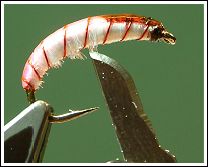
Cut directly under the body using the
scalpel blade cutting all the way until i reach the eye of the hook which will cause the
antron to spring out to form the legs
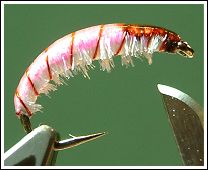
Finished fly
Above described method can be used in
many patterns like caddis from the larva stage to the adult and also Mayfly patterns it is
up to you.
Alder Nymph
Rib: Gold wire,
Body: White antron then colour with a light yellow pantone pen and then colour the
top of the abdomen with a brown pantone pen next super glue then varnish and then
cut with the scalpel blade to form the gills. (see above description for McPhail Bug)
Thorax: Brown Turkey feather folded in-between a Hares lug dubbing two to three
times then velcro out the guard hairs from the dubbing to form the legs.
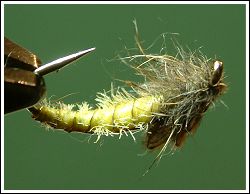
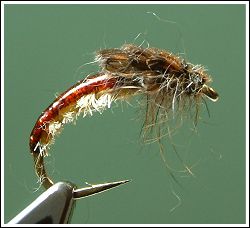
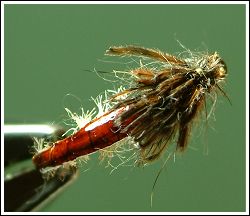
by Davie McPhail 2003 © |